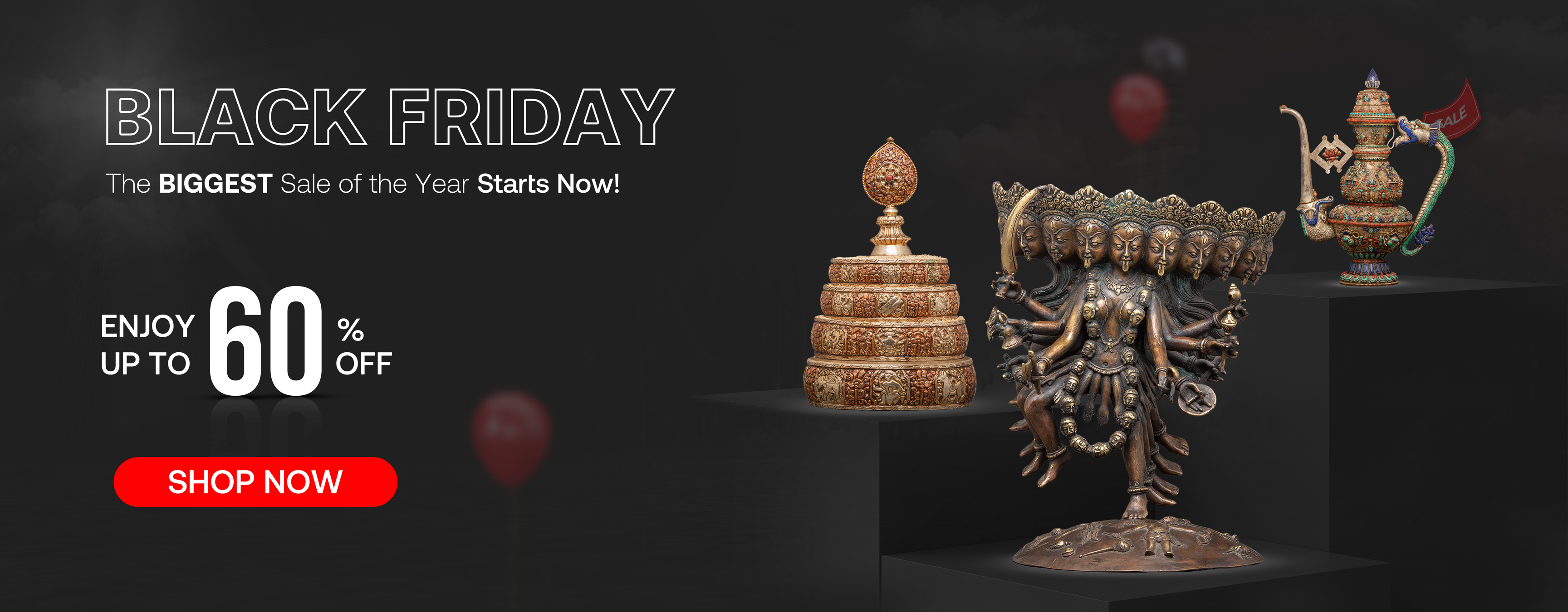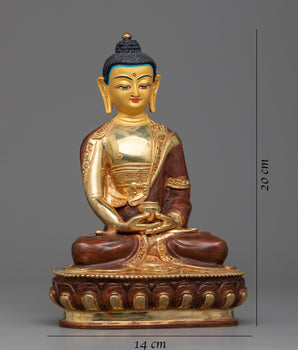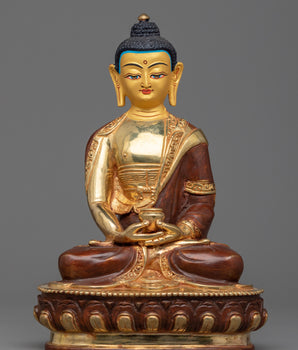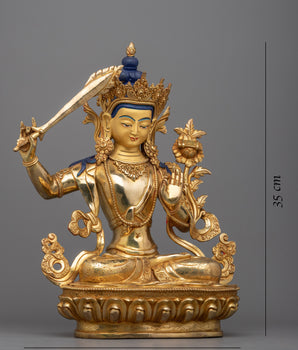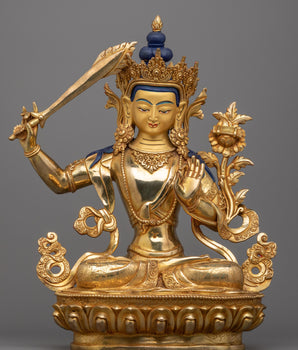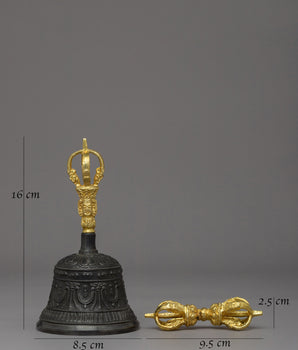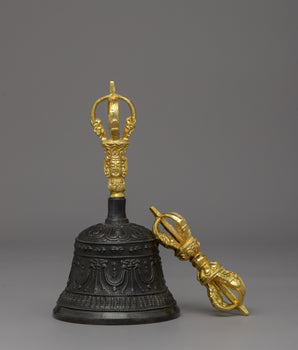Introduction: The Enchantment of Crystal in the Himalayas
In the towering peaks of the Himalayas, spirituality and artistry have always gone hand in hand. This region, stretching across Tibet, Nepal, Bhutan, and northern India, is often called the "Roof of the World"—not only for its altitude but also for its spiritual significance. Every valley, monastery, and artisan’s workshop tells stories of devotion, meditation, and sacred traditions.
Among the many materials revered in this region, crystal holds a unique place. More than a gemstone, crystal is a symbol of clarity, spiritual awareness, and purity. Over centuries, it has been carved, blessed, and incorporated into sacred objects that help practitioners connect with higher states of consciousness.
This blog explores crystal’s journey in Himalayan art—from its spiritual symbolism to its historical origins, from its artistic applications to its continued relevance today. We’ll also showcase a selection of exquisite crystal pieces inspired by these traditions and share tips on how to keep them safe for generations to come.

Click here to learn more about our Crystal Shakyamuni Buddha
Crystal Symbolism in Himalayan Spirituality
In Himalayan Buddhism and Bon traditions, crystal symbolizes the clear light of awareness—a key concept in advanced meditation practices like Dzogchen and Mahamudra. Crystal’s transparency represents a mind free of illusion, while its refractive brilliance reflects spiritual insight and enlightenment.
Throughout Tibetan thangka paintings and initiation cards, crystal appears as a recurring motif. Often, it is depicted alongside:
-
Vajras (Dorje): Representing the indestructible nature of reality.
-
Lotuses: Symbolizing spiritual purity and blossoming wisdom.
-
Rainbows and Mirrors: Illustrating the luminous, reflective nature of mind.
In Dzogchen practices, meditators sometimes use crystal spheres to focus their gaze, calming mental distractions and entering a state of clarity. This deep association with spiritual light and awareness elevated crystal from mere ornament to a central spiritual tool.
Ritual and Meditative Applications of Crystal
Crystal’s role in Himalayan culture is not confined to symbolic art. It has also been an essential material for crafting ritual implements, meditation aids, and sacred offerings.
1. Crystal Malas (Prayer Beads)
Prayer beads made of crystal are a staple in Tibetan Buddhism. Each bead represents a mantra recitation, and crystal malas are specifically chosen for practices that aim to purify negative karma. Their smooth, cool surface is thought to calm the mind and facilitate focus.

View our Entire Beads Mala Collection
2. Ritual Stupas and Chortens
In sacred stupas—architectural structures that hold relics—crystals are often used to crown or enshrine holy relics. This practice emphasizes the clarity of spiritual vision and honors the sanctity of the relics.
3. Divination and Ritual Tools
Tibetan lamas have historically used crystal in divination practices. Polished spheres and prisms, often blessed and consecrated, were used to “see” visions or interpret omens, further reinforcing crystal’s mystical qualities.
4. Healing Practices
Though crystal healing has become popular worldwide in recent decades, Tibetan medicine has long held that crystals embody elemental energies, which can restore balance and vitality when worn or placed in sacred spaces.

Explore our Crystal Stupa Collection
Mining and Mysticism: The Sacred Source of Crystal
The Himalayas themselves are considered sacred in Buddhist and Hindu traditions. Peaks like Mount Kailash are revered as manifestations of divine energy. It’s no wonder, then, that crystals sourced from these mountains are believed to carry natural blessings.
In ancient times, monks and pilgrims traveled to remote Himalayan caves and quarries to harvest crystal. This act was often seen as a spiritual pilgrimage, and the crystals were believed to absorb the prayers and intentions of their gatherers.
Local legends speak of crystals being “gifts of the mountains,” often revealed after snowmelt or landslides. For artisans, working with such a material was considered a devotional practice in itself.
Crystal in Himalayan Art: Evolution Over Centuries
Himalayan art is characterized by precision and spiritual intention. Artists work according to ancient manuals that specify iconometric proportions and symbols. Crystal’s role in this tradition reflects both its rarity and its metaphysical associations.
Early Symbolism (11th–14th Centuries)
During the early spread of Buddhism in the Himalayas, crystal was primarily depicted symbolically in manuscripts, murals, and thangkas. Artists used painted crystal motifs to represent the enlightened mind.
Material Inclusion (15th Century Onward)
As trade and craftsmanship flourished, Himalayan artisans began to incorporate actual crystal into statues, jewelry, and ritual objects. Crystal malas became highly prized, and crystal-inlaid ritual items became status symbols within monasteries.
Modern Adaptations
Today, Himalayan crystal art remains deeply spiritual while also appealing to collectors and practitioners worldwide. Artisans in Nepal and Tibet continue to create crystal vajras, kapalas, and ritual conch shells, combining centuries-old techniques with contemporary creativity.
The Spiritual Significance of Crystal in Tibetan Philosophy
By integrating crystal into both sacred art and daily practice, Himalayan artisans invite practitioners to bridge the gap between material and spiritual realms. Crystal embodies core Tibetan Buddhist principles:
-
Clarity of Mind: Crystal’s transparency mirrors the concept of a pure mind, free from attachment and ignorance.
-
Interconnectedness: Just as crystal refracts light into rainbows, enlightened wisdom reveals the interconnected nature of reality.
-
Sacred Energy: Crystals are often blessed by lamas, imbuing them with mantras and intentions, making them powerful tools for meditation and healing.
Crystal Creations from EvamRatna
EvamRatna is committed to preserving Himalayan traditions through handcrafted spiritual art. Here’s a look at some unique offerings:
-
Crystal Vajra (Dorje)
A symbol of spiritual power, the vajra represents the “diamond-like” nature of enlightened wisdom. Crystal vajras are often placed on altars to inspire clarity and strength during meditation. -
Crystal-Inlaid Ganesh Statue
This beautiful sculpture combines copper craftsmanship with crystal inlays, blending Hindu symbolism with Himalayan artistry.
-
Crystal Conch Shell Offering
In Tibetan Buddhism, the conch shell represents the sound of the Dharma. A crystal conch, often adorned with silver or gemstones, is used as a sacred trumpet or offering vessel. -
Crystal Kapala Set
A ritual skull cup crafted from crystal, copper, and precious stones. It’s used in high tantric practices as a reminder of impermanence and a symbol of transformation. -
Crystal Mala Beads
Hand-strung beads designed for mantra recitation. Perfect for purification practices, these malas combine artistry with profound spiritual symbolism.
Each piece is created with devotion, transforming every artwork into a sacred companion for meditation and ritual. View our Entire Crystal Collection here:
Caring for and Preserving Your Crystal Artworks
Crystal artworks are both spiritual and artistic treasures. Proper care ensures they remain vibrant and powerful for years:
-
Always handle with clean, dry hands.
Place statues and tools on stable surfaces away from vibrations or clutter. -
Wrap items in silk or cotton cloth when not in use. Store malas in soft pouches to avoid scratches or tangles.
-
Keep statues away from shelf edges and heavy objects.
Environmental Tips
-
Avoid direct sunlight for prolonged periods to prevent fading.
-
Maintain moderate temperatures; crystal can crack in extreme heat or cold. Keep away from damp environments to protect accompanying metals.
Cleaning
-
Wipe gently with a soft microfiber cloth. Never use harsh chemicals or abrasives.
With mindful care, these artworks remain both energetically powerful and visually stunning, ready to serve as sacred tools for meditation or display.
The Global Appeal of Himalayan Crystal Art
Himalayan crystal art resonates with a global audience of spiritual seekers, collectors, and wellness practitioners. The combination of artistry, spirituality, and history makes these items meaningful beyond aesthetics—they are tangible connections to Himalayan wisdom.
Supporting artisans by purchasing these creations also ensures cultural preservation. Every piece you own contributes to sustaining a tradition that has been passed down for centuries.
Himalayan crystal art is more than decoration; it is a living tradition that reflects humanity’s timeless quest for clarity, wisdom, and connection to the divine. Each crystal item carries stories of mountains, monasteries, and artisans who see their craft as a spiritual offering.
As these treasures find homes across the globe, they serve as reminders of the Himalayas’ enduring spiritual power—an invitation to pause, reflect, and connect with something greater.






